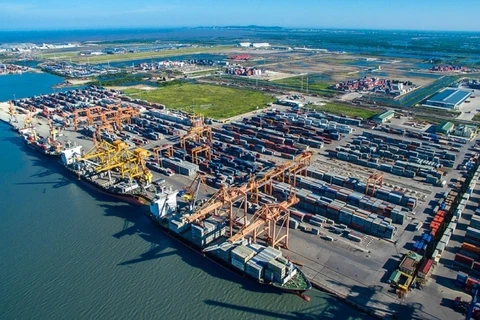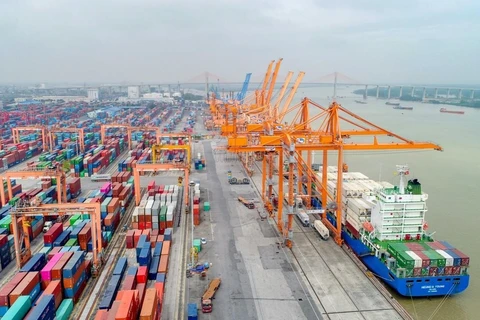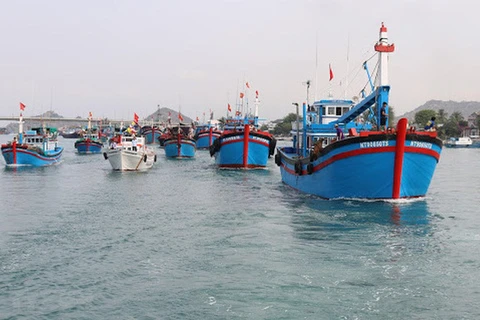Hanoi (VNA) - According to the Ministry of Transport, will need over 24.3 trillion VND (over 1 billion USD) to develop its inland port system by 2030.
The ministry has planned to mobilise various investment resources for developing inland ports, focusing on encouraging and creating favourable conditions for private enterprises to join the work.
The development of inland ports is expected to contribute to organising the transport network and transhipment of imports and exports by container, reducing road congestion and taking advantage of waterways and railways to transport goods to Vietnam.
In the draft “Master plan on development of Vietnam's inland port system in the period of 2021 – 2030 with a vision to 2050”, the Vietnam Maritime Administration (VMA) said that the country has invested and put into operation 10 inland ports (nine in the North and one in the South), and six inland container depots (ICDs) in locations planned for inland ports.
After four years of implementing detailed planning on the development of Vietnam's inland port system to 2020, the new inland ports in operation account for about 15% of the total number of planned inland ports.
According to the VMA, ports in the region promote their advantages in inland waterway transport accounting for 35 – 40%, well supporting seaports in the transhipment of import and export goods by container, reducing congestion at seaports and urban traffic in Ho Chi Minh City.
The VMA also said the rate of using inland ports and ICDs in the North is still low because the sea container transport market is only about 30% of the south.
According to VMA General Director Nguyen Dinh Viet, the inland port development planning has yet to be synchronised with other plans, especially transportation and land use plans.
The inland port system will be able to handle about 20-30% of the demand for import and export container transport with a total capacity of about 6-8.7million TEUs a year by 2025 and about 25 -35% by 2030, Viet said.
With the orientation to 2050, the country will develop inland ports into centres for transportation, transhipment and distribution of goods as well as provision of logistics services, capable of passing about 30 – 35% of import and export container transport demand along the transport corridors and at the same time meet the demand for logistics services in localities.
According to the Ministry of Transport, there is no general investment fund for developing inland ports, and the calculation of capital demand for the scheme by 2030, with a vision to 2050, is based on the areas that need to be invested with the average cost.
By 2025, the total investment for inland development is 13.6 trillion VND, and the figure will increase to 24.36 billion VND by 2030. By 2050, the investment capital for developing inland ports may reach 33.8 trillion VND.
From now to 2025, priority will be given to developing inland ports along transport corridors connecting with major seaports and border gates in the northern and southern regions, such as Hai Phong Port, Tan Thanh border gate in Lang Son province, and Cai Mep-Thi Vai Port.
The Ministry of Transport is considering investing in inland port development as a public-private partnership (PPP) for large-scale inland ports.
The State will create favourable conditions for land funds and investment in connecting rail routes with inland ports and issue relevant mechanisms and policies to encourage private investment in this work.
The ministry will also closely coordinate with local ministries and sectors to arrange suitable land funds for developing the inland port system, integrating inland port planning and logistics centre planning in local plans to avoid wasting investment resources and to ensure exploitation efficiency./.
























